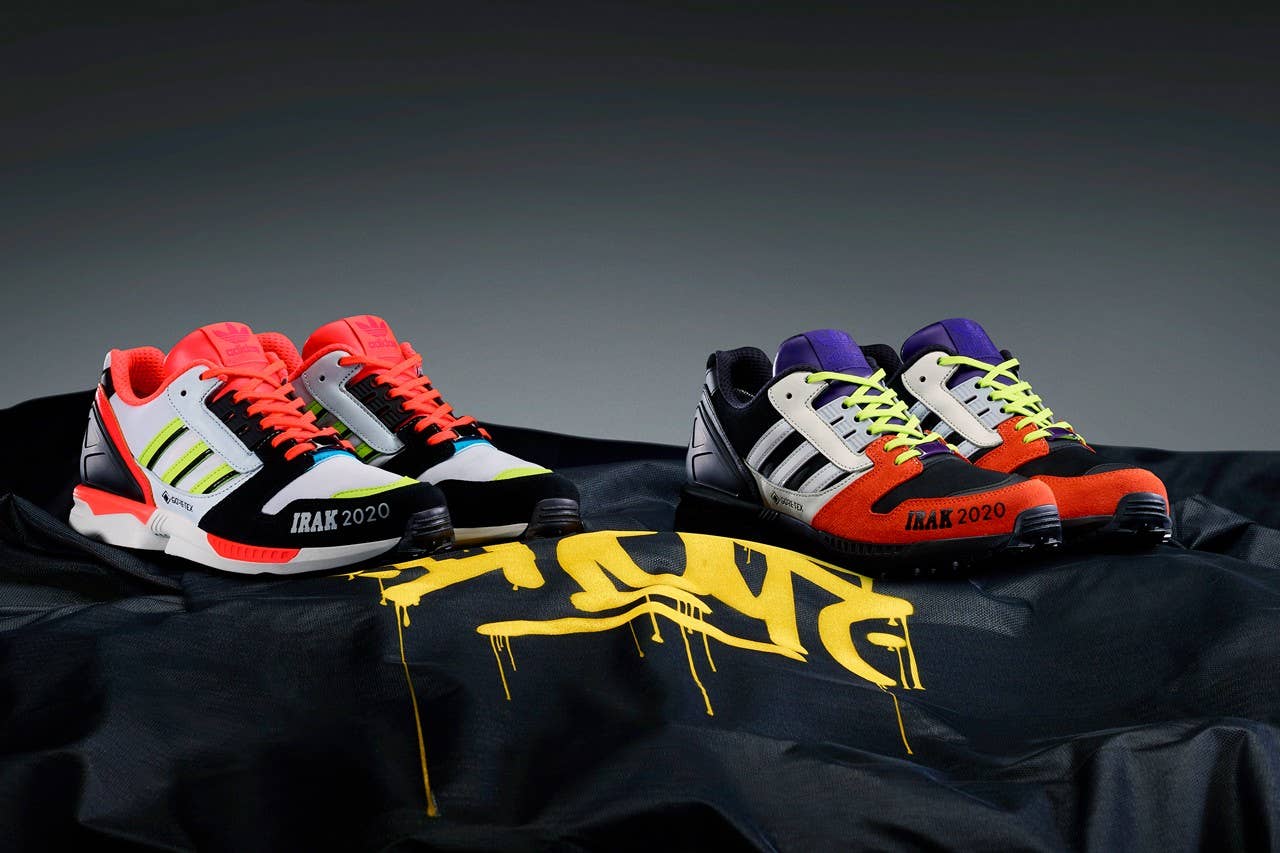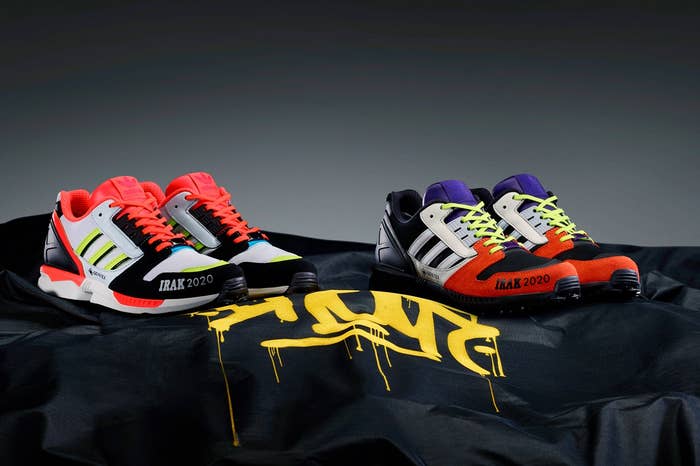
Kunle Martins doesn't want to do anything.
"I want to close the shades, never leave my apartment, and watch YouTube on Apple TV," he says. "Not have anything to do."
In this sequestered state of fantasy, in an anonymous black hole apartment in New York, he consumes car crash compilations, Karen freak-out supercuts, and videos of rabid First Amendment defenders videotaping public buildings.
This may be because he's already done everything. A graffiti writer and reformed derelict, Martins has written his EARSNOT tag on every surface his fingertips met for decades, pushed footwear at one of New York's defining sneaker boutiques, designed a duo of Adidas tied to his IRAK crew, and transitioned to a fine-art career. It turns out he may have more to do.
The sneaker section of Martins' biography expanded last week with the release of two more Adidas, sequels fashioned after the original IRAK x Adidas Remix EQT Sport Runners from 2007 and 2008. They arrived first via the IRAK website on Aug. 28 and will see a wider release on Friday via Adidas and Adidas Consortium accounts. Both are dressed in black, yellow, red, and silver. The two new pairs, both Adidas ZX 8000s, wear GORE-TEX and reflective paneling in crispy homage to the kind of gear Martins grew up coveting and boosting.
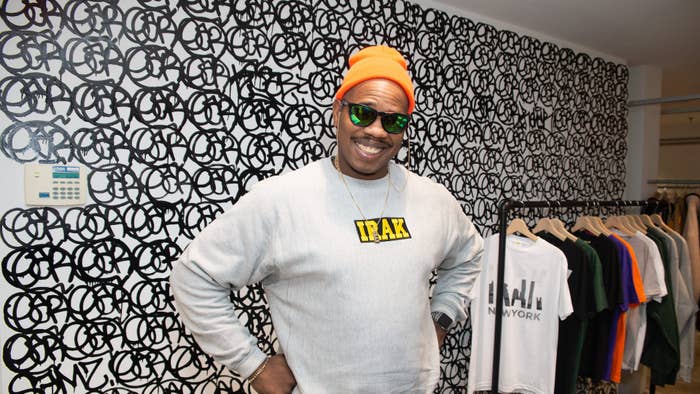
"They weren't things that we could really afford, so we had to steal them," he says of those garments flashing in his memory. Absconding with technical outerwear, or paint, or whatever the day demanded (racking) became a hobby and a lifestyle and later became IRAK, a deep squad of vandals led by Martins. The obsession with functional clothing persists.
"Looking good is great," he says, "but does it do stuff?"
Martins admits that this logic only extends so far. When you're racing like a rat through MTA property, the clothes don't always match the cause.
"Wearing expensive clothes and then painting and ruining your clothes—it doesn't make any sense," he says. "There's no consistent line of thought throughout the whole thing. I've been in a subway tunnel wearing all white before."
His late friend Joey Semz, another IRAK member, would go bombing in sweatpants, unfussy gear that made him look like a construction worker. Legendary writer REVS took it even further by dressing up as a transit worker to avoid capture. Martins says that he never thought too much about his own footwear while he went out writing.
"The only thought I'm thinking of is being electrocuted to death or tripping and falling and a train hitting me," he explains. "Neither of those things has happened—knock on wood—yet."
So the IRAK x Adidas are not engineered to withstand a third rail's lethal current. They do not have performance benefits that will make you any less of a toy. They are more indebted to the costly jackets and weatherproof pants of Martins' youth. The ZX 8000s are being sold at sneaker boutiques, but they might make more sense on the shelf at Paragon Sports.
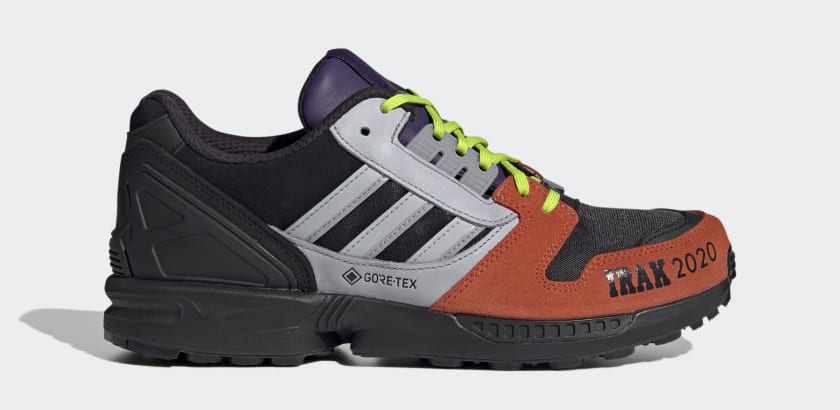
"My original idea was to make them all GORE-TEX and all reflective," he says. They are exactly the shoes you'd expect from a man who owns 900 rain jackets—shells of all sorts that will suit him for any climate, any monsoon, any aquatic disaster.
Martins' sneaker sensibilities were shaped partly by his tenure at pioneering New York streetwear shop Alife, but shoes were important to him long before then. First it was in first grade, noticing what classmates had on feet. Next it was the all-white Avias he got for his seventh birthday in 1987. Then it was skate shoes like Etnies and DCs that he'd steal as a teenage runaway. He eventually found a home at Alife, which popped up in 2001 right after 9/11.
He worked the floor, fought people at the store's backyard parties, and treated customers with the same ribbing he underwent when he first stepped into Supreme.
"I would go outside and heckle the kids who were really eager to buy some SB or Air Max or Jordan," he recalls with a hint of glee.
Martins also got his first exposure to graphic design through Alife. He watched people in the upstairs office making their art on computers, something he remembers as novel at the time. He realized that he was interested in more than just being a knucklehead, carrying a razor in his mouth, and robbing people on the train.
"That was a big part of it for a lot of people," Martins says, "and the more I was exposed to it, the less I wanted those parts."
If he was anywhere near a reformation at the time, the New York Police Department didn't necessarily believe in it. Back then, Martins saw himself as the Carl Lewis of cop evasion. Or, as he puts it in a fitting moment of brand alignment, a Gazelle.
"Shoutout Adidas," he adds here.
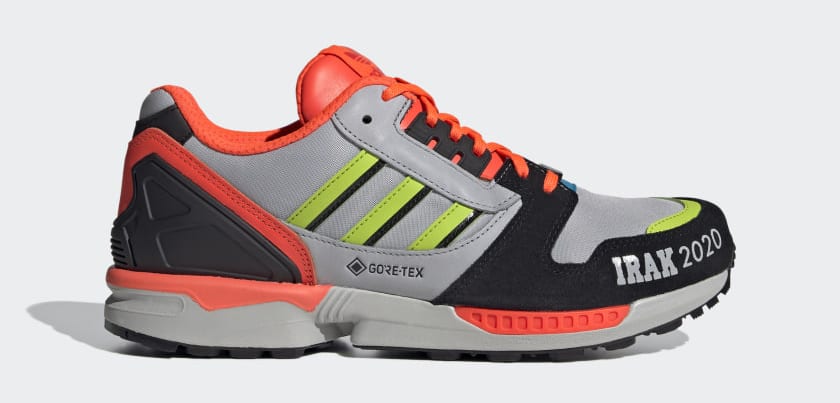
Once, in 2003, police arrested him for graffiti offenses while he was on shift at Alife, but not before browsing for sneakers.
"If you're not gonna do your job, we got you—discounts, whatevs," he told the officers. "If you're arresting me, then we have to wrap this whole charade right now. No shenanigans, fellas. Do one thing. You have one job. Do the job or abandon the job, and then I got you on kicks. But not both."
They arrested him and he got five years of probation. They did not buy any sneakers. Back then, a footwear obsession was not such a common thing. One would not expect a random pedestrian (or one of New York's finest) to be fluent in trainers. Back then, if you saw someone with something special on, it meant they were part of a club.
"You break your neck, you break your fucking neck," Martins says, going back in time to see a rare flavor standing on a curb. "It's a sneaker you've literally never seen before. You're looking at it from across the street."
He was cynical about the game when it began to bubble over. There's an old clip online of him and another late IRAK comrade, Dash Snow, discussing the group's origins. They speak of graffiti in its purest strain, an act of defacing that does not aim for gallery stardom or sneaker brand partnerships.
"I was the illest hater for so long," Martins says now. "I hated everyone and everything better than anyone you know hates anything. I was so good at it."
Sportswear brands had already tapped into graffiti at that point, though. Futura and Stash were embarking on regular projects with Nike. Steve Powers, who writes ESPO, dropped his see-through Nike Air Force 2 Low collaboration with Nike in 2004. Somewhere in there, Martins' cynicism thawed.
His first IRAK sneakers in 2007 were birthed through emails traded over fuzzy dial-up connections. He doesn't recall every detail, but someone at Adidas reached out in hopes that he'd color up the Remix EQT Sport Runner. Since then, the crew's sneaker projects have been few. Martins and Ben Solomon, who goes by King Solomon, each did IRAK jackets with Nike in 2012, but they weren't available at retail. Solomon designed a Superstar 2 with Adidas in 2013, but that was never released for the public, either.
Adidas came calling again a few years back. The public didn't glimpse the IRAK ZX shoes until a few weeks before their arrival late this summer, but they were originally supposed to release in fall 2019. Then fall turned to winter, winter turned to spring, and spring turned to COVID-19.
"I've been working on this thing with Adidas for a couple of years now," Martins says, "and the concept wasn't new to me anymore. I was really happy to get it out. I've been around the idea of it for a long time."
The ZX 8000s have been successful so far. They belong to Adidas' A-ZX collection, celebrating its retro ZX sneakers, and are easily the most exciting of the group yet. The initial release via the IRAK website sold out in minutes. Given that, does Martins feel his mission with them is complete?
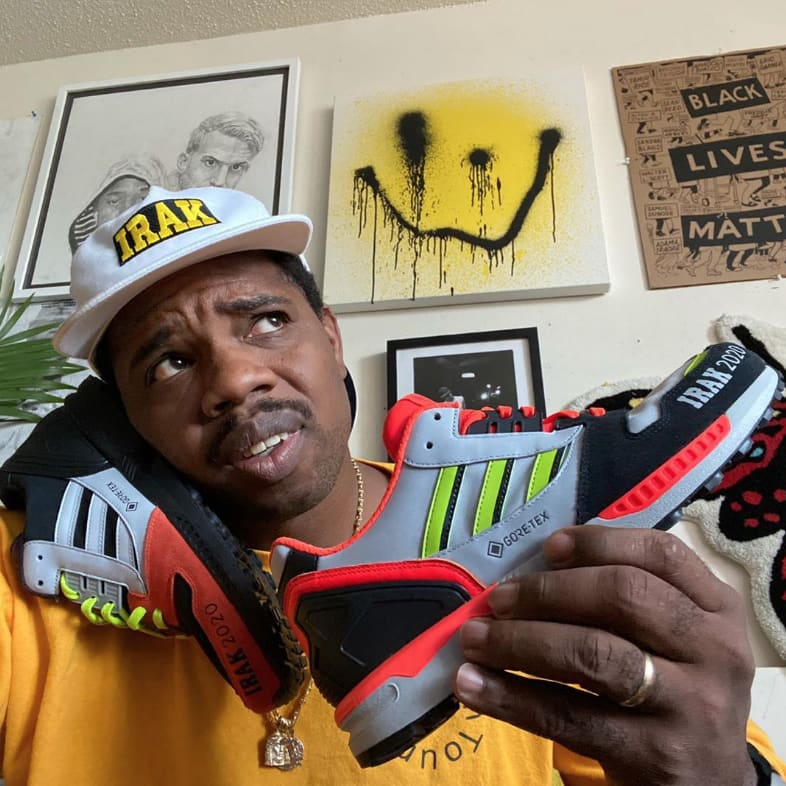
"There are other parts to the mission," he says. "This particular aspect is complete; I'm very satisfied with it."
What does the bigger mission mean? Giving back, according to Martins. Giving something to the world, whether it's a set of sneakers with Adidas or a portrait sketch in a gallery downtown. It's the kind of thing that helps him build a connection and a community. It's the thing that helps him become unstuck from a dark apartment, curtains drawn, in YouTube hell. That's him in first-person mode.
"As soon as I think about it as Kunle's life and Kunle's shoe and Kunle's brand, I am doomed," he says. "Things don't work out. Communication breaks down. But when I think about it in terms of, 'How can I be of service to people? How can I share something that I believe in? Or an idea? Or use this as a platform? Or bring people together?' Then it just fucking works."

